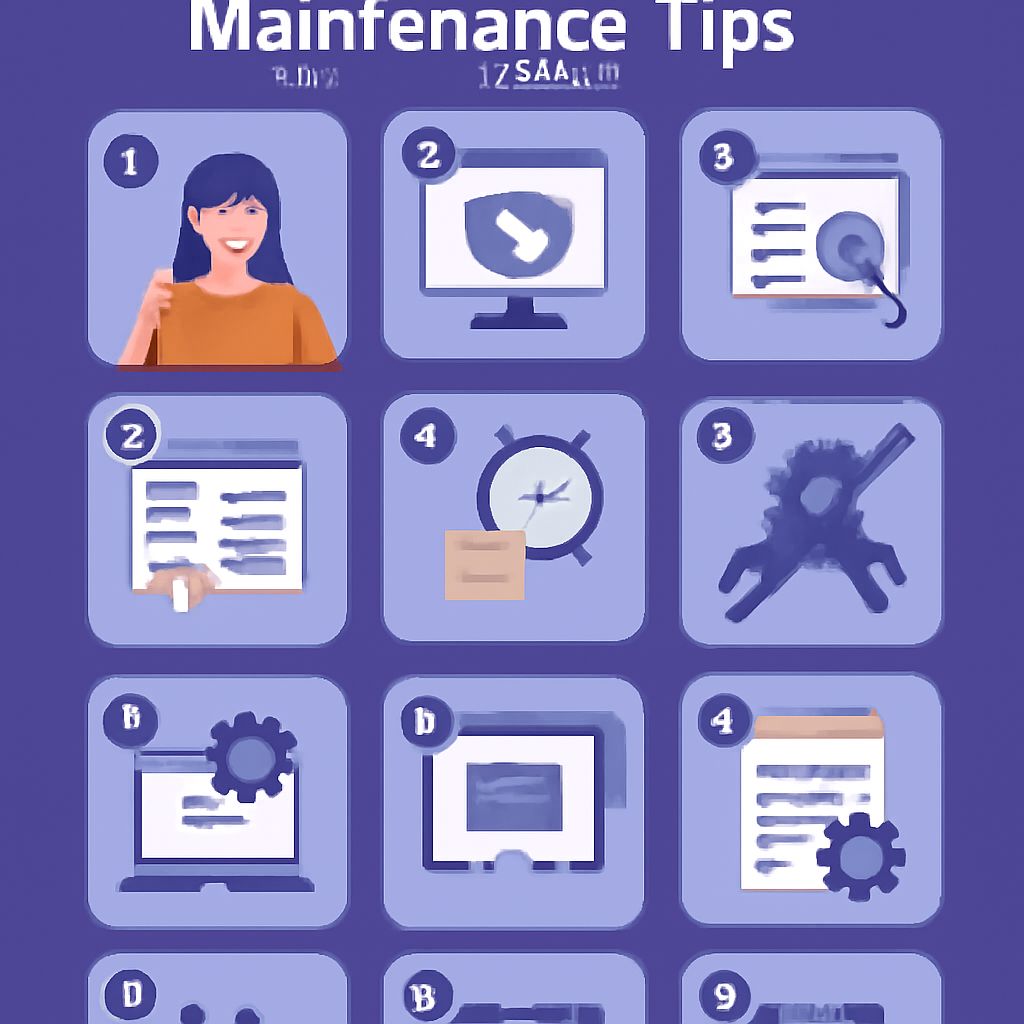10 Essential Website Maintenance Tips for Designers in 2025
Discover 10 crucial website maintenance tips for designers to keep their sites running smoothly and efficiently in 2025.

Table of Contents
10 Essential Website Maintenance Tips for Designers in 2025
As we move further into 2025, the digital landscape continues to evolve rapidly. For designers, maintaining a website’s functionality, aesthetics, and performance is crucial to keep up with changing technologies and user expectations. Regular website maintenance not only enhances user experience but also improves search engine rankings and ensures security. Here are ten essential website maintenance tips for designers in 2025.
1. Regularly Update Content
Content is the backbone of any website. Updating content regularly helps keep your site fresh and relevant, which can lead to increased traffic and user engagement. Additionally, search engines favor websites that frequently update their content. Here are some tips:
- Schedule regular content audits every 3-6 months.
- Update or remove outdated blog posts and articles.
- Add new insights, trends, or case studies relevant to your audience.
2. Optimize for Mobile
With the majority of users accessing websites via mobile devices, it’s essential to ensure your site is fully optimized for mobile use. Google prioritizes mobile-friendly websites in its rankings, making optimization a top priority.
| Optimization Techniques | Description |
|---|---|
| Responsive Design | Ensure your website layout adjusts seamlessly on different devices. |
| Fast Loading Speed | Optimize images and reduce file sizes to improve loading times on mobile. |
| Touch-Friendly Navigation | Make buttons and navigation elements large enough for easy tapping. |
3. Conduct Regular Security Audits
Cybersecurity threats are constantly evolving, and a secure website is non-negotiable. Regular security audits can help identify vulnerabilities and protect your site from attacks. Here’s how to approach security audits:
- Use SSL certificates to encrypt data.
- Regularly update all plugins and CMS to their latest versions.
- Implement strong password policies and two-factor authentication for administrative accounts.
4. Backup Your Website Frequently
Backing up your website is a vital maintenance task that can save you from catastrophic data loss in case of a hack or server failure. Consider the following approaches:
- Use automated backup solutions that run at regular intervals.
- Store backups in multiple locations, such as cloud storage and local devices.
- Test your backups periodically to ensure they are functional and up-to-date.
5. Monitor Website Performance
Website performance affects user experience and SEO rankings. Regularly monitoring metrics such as loading speed, bounce rate, and user engagement can help you make necessary improvements. Tools such as Google Analytics and GTmetrix can assist in performance tracking.
6. Check for Broken Links
Broken links can negatively impact user experience and SEO. Regularly check for broken links and fix them promptly. Tools to help with this include:
- Google Search Console
- Ahrefs
- Screaming Frog SEO Spider
7. Update Your SEO Strategy
SEO is an ever-evolving field with new algorithms and best practices emerging constantly. To stay ahead, keep your SEO strategy fresh:
- Conduct keyword research to identify new opportunities.
- Update meta descriptions and alt tags for images.
- Optimize old blog posts to align with current SEO standards.
8. Engage with User Feedback
User feedback is invaluable for enhancing your website’s usability and design. Regularly engage with your audience to gather insights:
- Utilize surveys and feedback forms to gauge user satisfaction.
- Monitor social media channels for comments and opinions about your site.
- Implement changes based on feedback to improve user experience.
9. Ensure Compliance with Legal Standards
As digital regulations evolve, it’s essential to stay compliant with legal standards, including GDPR and CCPA. Maintain compliance by:
- Regularly reviewing privacy policies and terms of service.
- Ensuring clear consent for cookies and data collection.
- Providing easy access to user rights regarding their data.
10. Leverage Analytics for Continuous Improvement
Using analytics data effectively can lead to continuous enhancements to your site. Make it a habit to:
- Analyze user behavior to identify popular content and areas for improvement.
- Set measurable goals for traffic, conversions, and user engagement.
- Adjust strategies based on performance data to meet user needs more effectively.
Conclusion
Website maintenance is a critical aspect of web design that should not be overlooked. By implementing these ten essential tips, designers can ensure their websites remain operational, secure, and engaging for users. With the digital landscape continuing to shift in 2025, staying proactive in website maintenance will not only enhance user experience but also drive better business outcomes.
FAQ
What are the essential website maintenance tips for designers in 2025?
In 2025, designers should focus on regular updates, security checks, performance optimization, content audits, mobile responsiveness, and SEO enhancements.
How often should I update my website in 2025?
It is recommended to update your website at least once a month to ensure content freshness and security.
Why is website security important for designers?
Website security protects against data breaches and cyber threats, ensuring the safety of both the site and its users.
What tools can help with website performance optimization?
Tools like Google PageSpeed Insights, GTmetrix, and Pingdom can help analyze and improve website performance.
How can I ensure my website is mobile responsive?
Use responsive design techniques, test on various devices, and utilize tools such as Google’s Mobile-Friendly Test.
What is the importance of SEO enhancements in website maintenance?
SEO enhancements improve search engine ranking, drive organic traffic, and increase visibility, which is crucial for online success.








